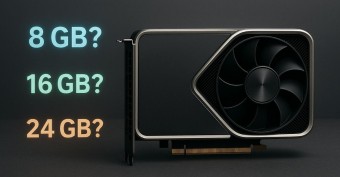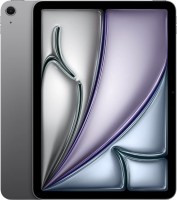Guide to the main lines of Apple laptops and tablets
We independently test the products and technologies that we recommend.

Laptops
Let's start with laptops. We just talked about the transition to the M1 mobile processor, if you need more details, then look at the link. Let's just note that now you can buy both a classic MacBook with an Intel processor and an identical laptop with an Apple M1 chip. This is a single-chip SoC that can run iOS applications and already looks like a formidable competitor for the flagship Core i7-1185G7 and i9-10900K processors. But this is just the beginning, most of the software on macOS has not yet been optimized for ARM processors.
 |
MacBook Air: Ultrabook Classics
Perhaps it is the MacBook Air that can be called the trendsetter of ultrabooks. In the early 2010s, together with Intel, they came up with the idea of crossing a MacBook with an iPad and see what happens. It turned out to be an unusually thin and stylish aluminium laptop with the coolest 13-inch Retina display and a pack of useful little things like a fingerprint scanner or the most convenient Force Touch touchpad. Unlike netbooks, the MacBook Air refused to sacrifice the size of the keyboard and the quality of the display to compactness, which played a decisive role in the success. Judge for yourself, regarding the durability of the battery, the coolness of the display, the quality of the aluminium case and other attributes ― this is actually the same MacBook Pro, only smaller and not as fast. The perfect option for those people for whom the mobility of the Air is more important than the performance of the Pro. However, with the transition to the new ARM architecture, this difference can be significantly blurred: in both laptops of 2020, the same processor is actually installed, only in Pro there are more cores and there is active cooling.
MacBook Pro: A powerful laptop for professionals
Apple has a very affordable product division. The ultrabook Air has never been subjected to high performance requirements, it is a product from the category "I threw it into a bag, turned it on in a cafe, made a text while drinking my coffee." The MacBook Pro is a different story. The sensations from the screen, keyboard, touchpad and case materials are the same, but the speed is several times higher, there are more ports, and the functional set is wider. Therefore, Pro models are bought by assorted pros to solve resource-intensive tasks like video editing, coloristics or music production. Room for manoeuvre is added by the fact that there are classic models with a 15-inch screen to choose from, and slightly larger options, and 13-inch compacts.
MacBook: classic format laptop
Classic Macbook from Apple, a long-time trendsetter and progenitor of the Air and Pro series. However, now for Apple it is like a suitcase without a handle, so the line of ordinary macs has not been updated since 2017. And this is quite logical, because Air and Pro with multiple display diagonal options satisfy all user requirements, and a 12-inch MacBook practically duplicates a regular Mac Air.
Tablets
 |
The situation is similar with tablets — there is a family of thin and light Air models, there are heavy-task-oriented Pro, miniature iPad Mini and classic iPad models with 10-inch displays, which are now experiencing a second youth.
iPad: a classic tablet with a 10-inch display
A classic tablet in Apple's understanding with an excellent 10-inch Retina display and an average level of performance. Steve Jobs had this idea for a reason for so long, it was the first iPad that gave the tablet industry a boost and it was he who determined how this device should look like. In 2020, Appple released the eighth version of the classics, which competently combines references to the classics and the desire to keep up with the times. The latter manifested itself in the support of console gamepads, keyboard cases and the ability to work with the Apple Pencil stylus. Although, it used to be the prerogative of the iPad Pro.
iPad Mini: 8-inch compact
According to Jobs' idea, people had to use tiny smartphones for communication and some small things, and use multimedia content from a tablet. But the invisible hand of the market, as always, made adjustments: Android mainly sold 7 and 8-inch models, and 10-inch models seemed cumbersome to many. Especially if you want to read a book in the evening or surf the net. Apple are not fools, they caught the signals, and in 2012 they released the iPad Mini. Since then, the essence of the line has not changed: this is the same classic iPad, only smaller, slightly slower and cheaper.
iPad Air: lightweight, powerful and elegant
After the success of the classic iPad, Apple decided to forge iron without leaving the cash register and in 2013 presented the debut iPad Air to the public under the slogan "We still have a lot to tell". People liked the idea of subtlety and weightlessness, so the Air line quickly caught up with the usual iPad in popularity. Since then, the Air line has followed a clear concept, but in 2020, the Air 4 model was released, which confused the cards. By reducing the frames and removing the Home button from the front panel, the tablet now looks more like an Apple iPad Pro 11. At the same time, it uses the most advanced chip, the case allows you to attach a branded keyboard, and the display can work with a touchpad. That is, it is not so much a classic Air as an iPad Pro S or iPad Air Maximum
iPad Pro: a powerful tablet with a claim to replace a laptop
In 2015, Apple gave birth to the firstborn in the face of the iPad Pro ― a professional tablet that can handle many of the "heavy" tasks that we are used to performing on a stationary PC. The tablet received a large 12.9-inch Retina display, the most powerful Apple A9X processor at that time with a PowerVR Series 7XT graphics accelerator and an M9 co-processor, 4 GB of RAM and 4 stereo speakers. At the same time, the "proshki" could work with a stylus, and new models with the help of magnetic latches are attached to a convenient, but terribly expensive Magic Keyboard. In addition to everything, iPadOS learned how to work with a mouse and keyboard, and also got a file manager, after which Apple started a song that the iPad Pro is a replacement for a laptop.
Articles, reviews, useful tips
All materials

















































































































